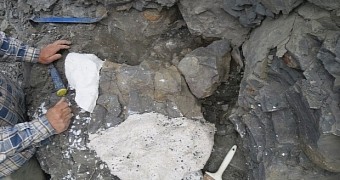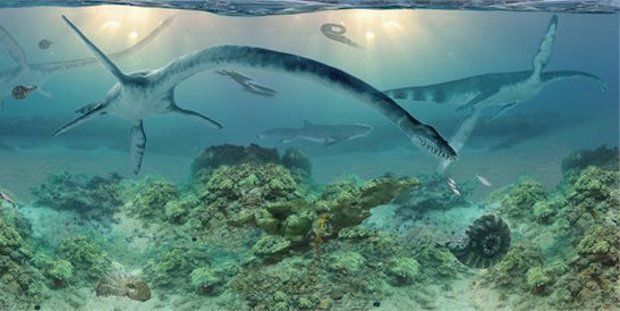Earlier this year, in June, the remains of an ancient long-necked marine reptile were discovered embedded in a cliff in Alaska by a team of paleontologists, among them researcher Patrick Druckenmiller with the University of Alaska Museum of the North and fossil collector Curvin Metzler.
The reptile, identified as an elasmosaur, lived about 75 million years ago, during the Late Cretaceous. It is the first sea dweller of its kind thus far unearthed in Alaska.
Fragments of the skeleton have kept popping out of the cliff for years
In recent years, fossil collector Curvin Metzler has found several bits and pieces of the skeleton simply lying on the ground in Alaska's Talkeetna Mountains.
Eventually, he decided that something worthwhile had to be hiding nearby, and so, together with Patrick Druckenmiller, he decided to organize a proper expedition.
The expedition proved fruitful as it didn't take the team all that long to pin down the origin of the bones found by Curvin Metzler: a skeleton embedded in a cliff.
The skeletal remains are hidden about halfway up a 60-foot (nearly 20-meter) vertical cliff that is now eroding. This explains the fallen fragments found by Curvin Metzler.
The team has excavated part of the skeleton, but many bones are still stuck in the cliff. They plan to return next summer and pull them all out for study.
The reptile was quite a sight, resembled the Lock Ness monster
Based on the bones they have so far recovered, the scientists believe the full skeleton of this elasmosaur specimen they found in Alaska measures around 25 feet (almost 8 meters) in length.
The reptile had a freakishly long neck, at least when compared to the rest of its body and its head, and relied on paddle-like limbs to navigate ancient seas, Live Science informs.
As paleontologist Patrick Druckenmiller put it, “Picture the mythical Lock Ness monster and you have a pretty good idea what it looked like.”

 14 DAY TRIAL //
14 DAY TRIAL // 

